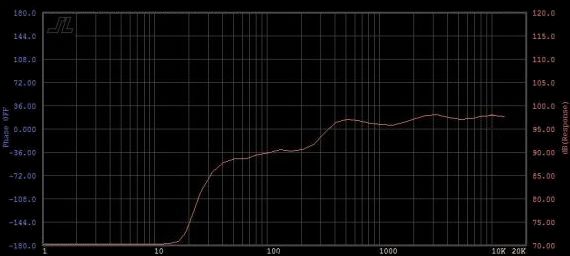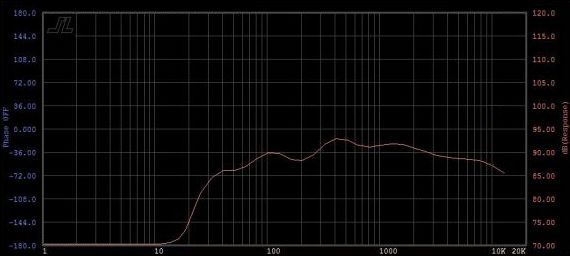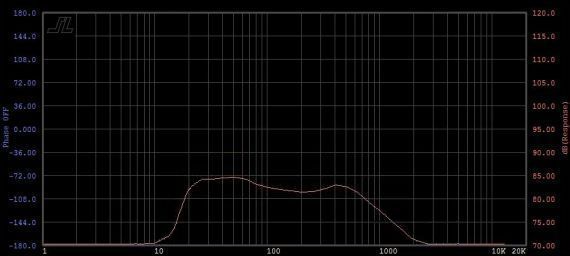|
Home » Sponsored » Pi Speakers » New Year, New Tweeter, Merry Christmas
| Re: Constant directivity verses on-axis EQ for non-uniform directivity (aka baffle step filters) [message #65429 is a reply to message #65427] |
Mon, 27 December 2010 10:12   |
 |
 Wayne Parham
Wayne Parham
Messages: 18683
Registered: January 2001
|
Illuminati (33rd Degree) |
|
|
Glad it was helpful. I hope it made sense and wasn't too abstract.
I find myself getting a lot of the same questions and comments over the years, and I tend to link to past posts in reply. I had a list of about a dozen posts that sort of covered the main concepts, and I linked to them when I wanted to give a basic overview. So I decided that a whitepaper that hit all the high points made more sense.
I should also point out that my reply, while in Bill's thread, was really for others that may drop in and read about baffle step. Bill has been a regular here for about 10 years, and has built just about everything I've designed. We've done the same trade shows more than once - I've been to his woodworking seminars and he's been to my crossover seminars. So most of this stuff is not news to him.
Baffle step compensation is one of the recurring discussion topics I feel somewhat strongly about. As I've said, it makes sense to me in the little milk carton sized mini-monitors, voicing them to provide more body. But speakers larger than that probably shouldn't have baffle step correction because the transition frequency is close to the Schroeder frequency. Below that, directivity loses its meaning.
You don't want to equalize what is essentially a directivity issue in a region where directivity has no meaning. Baffle step compensation circuits are designed under an assumption that there is a transition from 4π to 2π radiation. But that isn't true at 200Hz. If the baffle step transition doesn't occur above about 300Hz, then it doesn't happen at all. Not indoors, not in a home hifi environment.
All of my speakers are large enough that the baffle constrains the radiation angle to halfspace above the Schroeder frequency of most living rooms. The larger three π and four π models radiate halfspace at 300Hz up, and even the smaller one π and two π speakers radiate halfspace from 400Hz up. If they were used outdoors and flown in freespace where there was no boundary reinforcement, you would definitely want to equalize to compensate for baffle step. But indoors, you definitely don't want boost at those frequencies because room modes set the pattern, not the baffle. If you want to add power in that region, multisubs are the best option, not equalization.
Some say a picture is worth a thousand words, so let's add pictures to illustrate:
The response curve shown below is of one of our larger DI-matched two-way speakers, measured in freespace. It is a good representation of all our DI-matched two-way models, and is what you would expect if they were used outdoors, flown high off the ground with no boundary reinforcement. If you compare this with our published halfspace measurements, the baffle directivity transition is easy to see:
 DI-matched two-way loudspeaker on-axis, measured in freespace
DI-matched two-way loudspeaker on-axis, measured in freespace
You'll notice that below 300Hz, SPL is reduced by 6dB having the characteristic "baffle step" shelf. Many designers would point to this and immediately suggest a baffle-step correction circuit. If used outdoors or in a really large room, I might be inclined to agree. But then again, if used outdoors or in a really large room, I'd probably opt for a larger baffle and subs to cover the range. The point is, what we see here is on-axis response shows less output below 300Hz because the baffle constrains the radiating angle above that point. That's the key - This is a directivity shift, not a reduction in acoustic power.
Look at the same speaker rotated 45°, again, measured in freespace:
 DI-matched two-way loudspeaker rotated 45°, measured in freespace
DI-matched two-way loudspeaker rotated 45°, measured in freespace
Notice that off-axis energy is reduced at higher frequencies, but not at the lowest frequencies, where radiation is omnidirectional. If we were to have installed a baffle compensation circuit, the bass would be louder than the midrange and treble.
As we rotate further, passing the baffle angle, out to the side and around to the back of the speaker, the treble is completely lost and all that is radiated is the bass and lower midrange. So at these angles, a baffle correction circuit makes the spectral balance even worse.
 DI-matched two-way loudspeaker rotated just past 90°, measured in freespace
DI-matched two-way loudspeaker rotated just past 90°, measured in freespace
Some say this doesn't matter because the listener isn't ever going to be in those positions but that discounts the very important aspect of the spectral balance of the reverberent field. Indoors sound is not just direct, but a combination of direct and reflected sounds, and this is even more the case at low frequencies where most of what you hear is combined direct and reflected energies.
This is one of the reasons why the constant directivity cornerhorn approach is so attractive. All energies are thrown forward - There is no omnidirectional radiation because the walls constrain the pattern and limit the beamwidth to 90°. There is no "baffle step" and sound is constant throughout the room. Of course, room modes still setup but these can be mitgated using a multisub setup. But above the modal region, the sound radiation is constant and the spectral balance is uniform throughout the room.
|
|
|
|
Current Time: Mon May 06 17:09:37 CDT 2024
|







